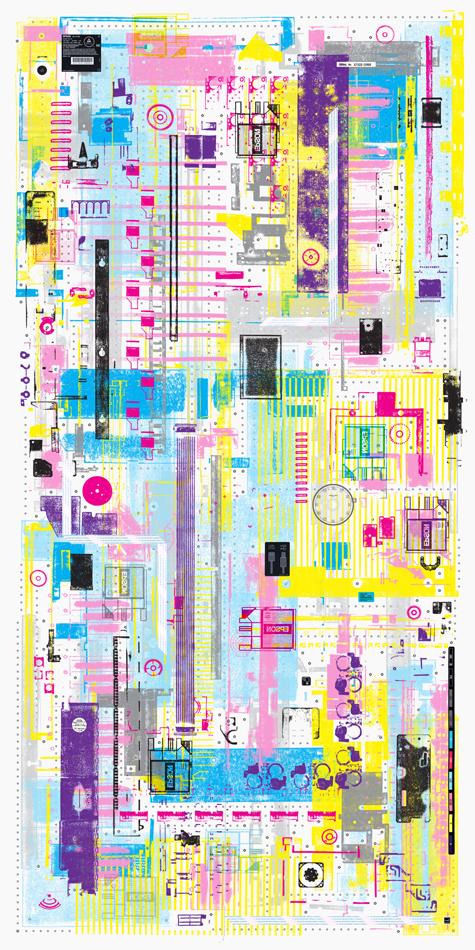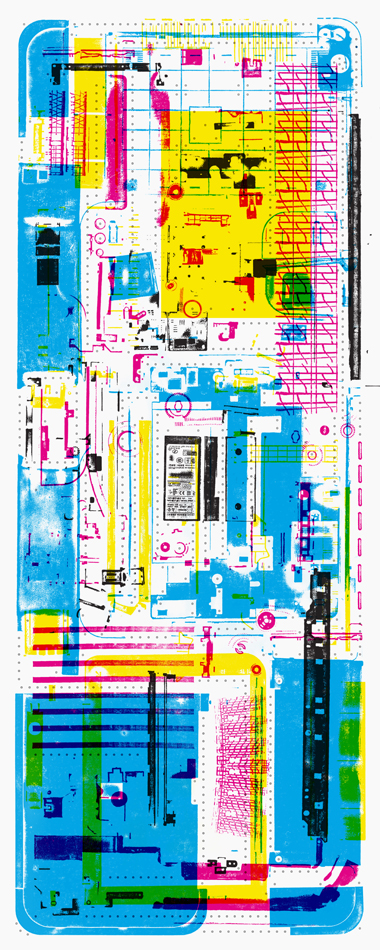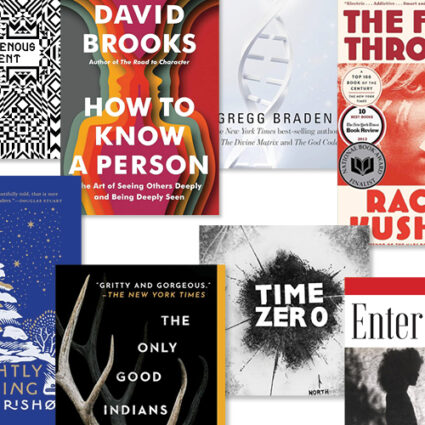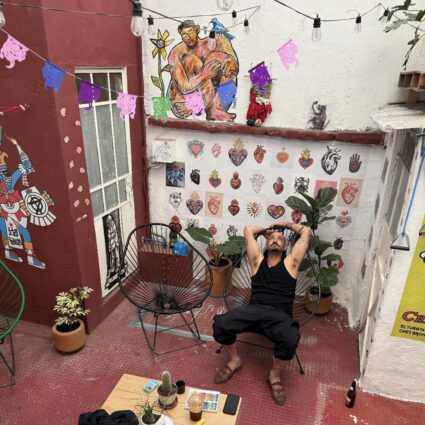By dismantling and depicting dead machines, artist Karl Orozco imagines new life cycles for our throwaway technologies.
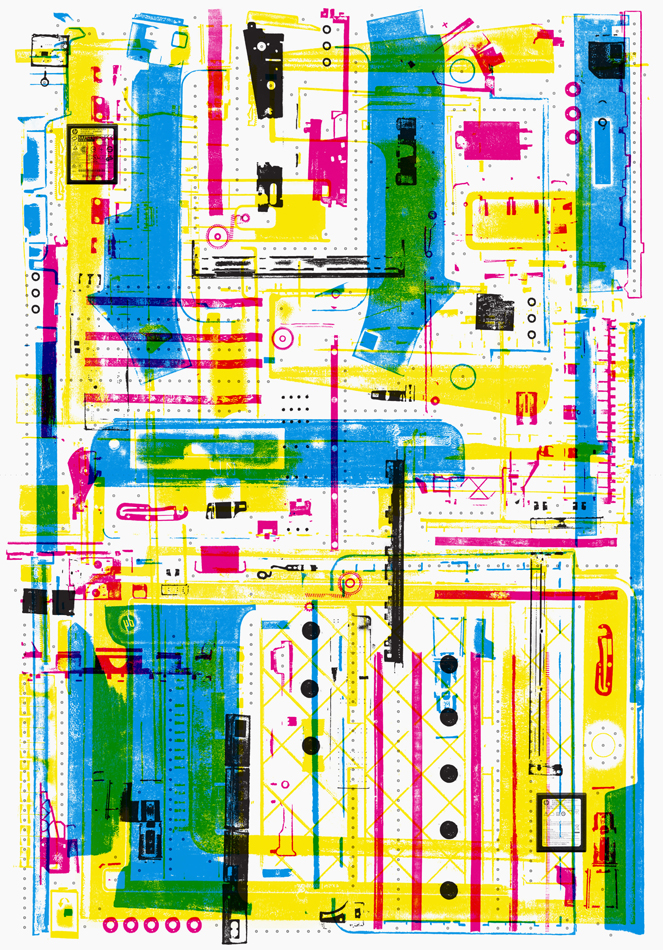
Albuquerque, New Mexico / karlorozco.com / @yung_buko
By his own account, Albuquerque-based visual artist and arts educator Karl Orozco explores “communication devices,” particularly when they “fall silent [and are] no longer able to convey a message.” Through an art practice that employs obsolescent objects that have fallen into disuse, Orozco captures “the tense space between death and rebirth” by exceeding “the typical lifespan of common, discardable machines.” In other words, Orozco sources technologies that are failed, bygone, or no longer function relevantly in contemporary society and asks: how can these products be leveraged into new art objects so as to infuse them with a second life, while simultaneously interrogating issues of consumption, waste, cataloguing, and upcycling?
A prime example of this mission is his Printer’s Proofs project (2023-ongoing). To begin with, Orozco looks for broken or discarded inkjet printers. After acquiring the printers, the artist deconstructs them, part by part, organizing all the component pieces by color, then he documents them through photographic means. Once he completes this step, he creates “black-and-white relief impressions out of every single part that can be printed.”
When he finishes the process of scanning the individual inkjet components, Orozco renders an aggregate composition in cyan, magenta, yellow, and black using Adobe Illustrator. The new, colorful composite images synthesize the various parts into an assemblage or collage-like artwork. Once he is satisfied with the results, the artist creates a relief-printed final edition that is highly textured.
The vibrant, multicolored end product offers viewers an abstract, aesthetic experience derived from the detritus of consumer culture and the hyper-obsolescence of technological advancement. Printer’s Proofs offers us a framework for prolonging the life of a consumable good by reimagining its use-value. In doing so, it necessarily provides us the possibility of reducing waste. And this waste reduction is inherently tied to the meticulous, if not obsessive, process of dismantling, documenting, rearranging, and re-envisioning a singular object.
